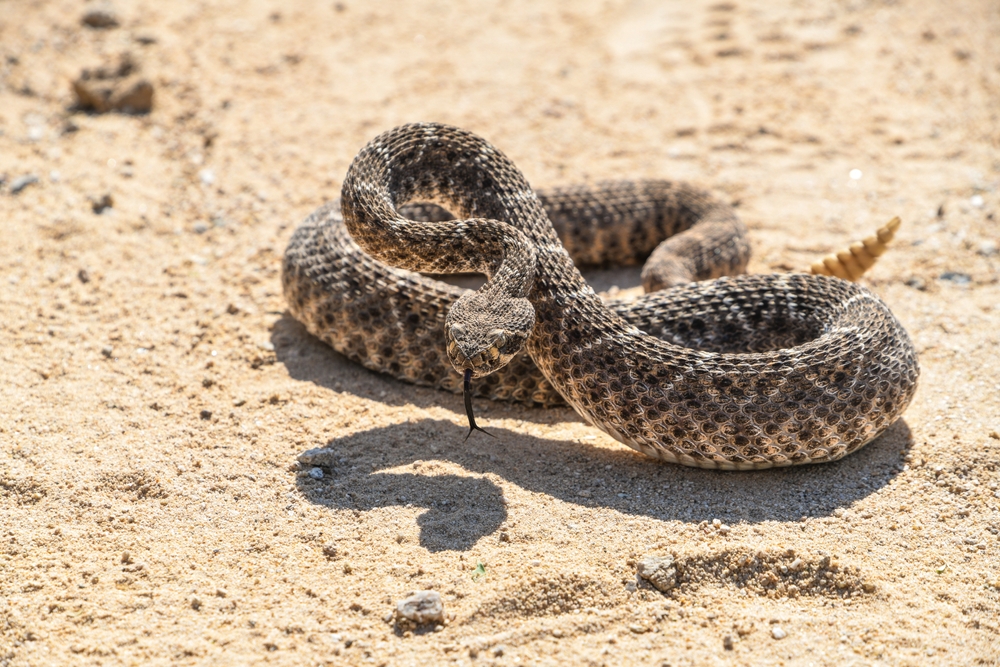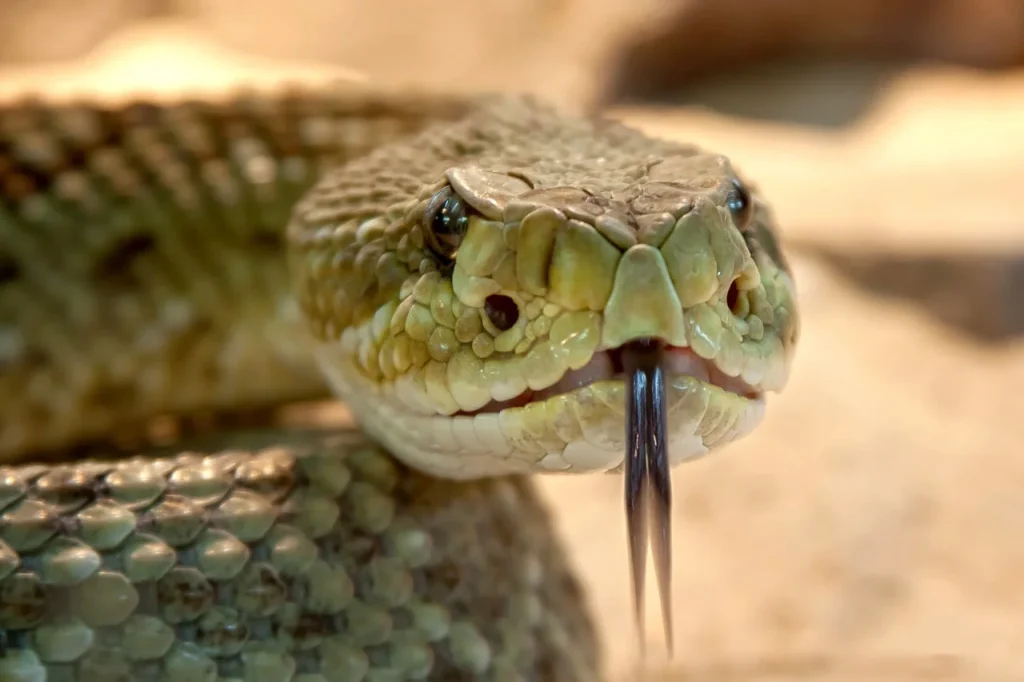
What comes to mind when you hear the word “rattlesnake“? For many, it’s the unmistakable sound of their rattle, a warning that these creatures mean business. Rattlesnakes are among the most intriguing and misunderstood animals in the wild.
In this article, we will uncover some fascinating facts about rattlesnakes that will surprise and educate you. From their unique anatomy to their survival strategies, get ready to explore the world of these remarkable reptiles.
We have met the enemy and he is us.
Walt Kelly
Rattlesnake Facts
Before we continue our journey into the world of rattlesnakes, remember that a quiz awaits at the bottom of this article. Read each fact carefully to test your knowledge and prove your expertise!
- Venom from these creatures can cause severe tissue damage and blood clotting disorders.
- Some species can control the amount of venom they inject, delivering a “dry bite” to conserve venom.
- They have specialized heat-sensing pits that can detect infrared radiation from warm-blooded prey.
- Their rattles are made of keratin, the same protein found in human fingernails.
- A newborn can strike and envenomate prey immediately after birth.
- They give birth to live young, a trait known as ovoviviparity, unlike many other reptiles that lay eggs.
- Their fangs fold back when the mouth is closed and spring forward when the snake strikes.
- The oldest known fossil of these creatures dates back to around 12 million years ago.
- Some can live for more than 20 years in the wild.
- Each segment of the rattle is added every time the snake sheds its skin, but the number of segments doesn’t indicate age due to breakage and loss.
- They can detect chemical cues with their tongues, which they flick to gather scent particles from the air.
- When threatened, they coil and rattle their tails to warn potential predators, an evolutionary trait to avoid conflict.
- Some species exhibit maternal care, with mothers staying with their young for a short period after birth.



2 Comments
Very informative. So many things I did not know. Thank you
Very interesting info! I have to point out something though! You mention early in the article that these snakes can launch up to two thirds of their body length in a strike. But in the myths section you say they can launch up to one third of their body length. I suppose it depends on the specific breed that determines that maybe?